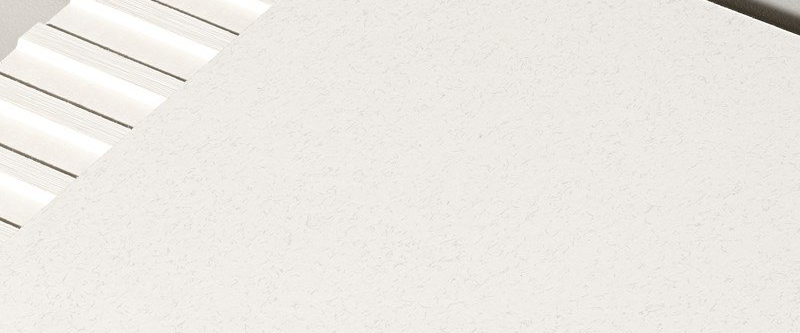Mitchelstown, Co Cork
Kevin Roche
1941
Photographs courtesy Kevin Roche John Dinkeloo and Associates

Kevin Roche won the Pritzker Prize in 1982, succeeding Philip Johnson, Luís Barragán and James Stirling. He is best known here for his Dublin Convention Centre but in architect-turned-filmmaker Mark Noonan’s feature-length documentary, Kevin Roche: The Quiet Architect (2017), images appear of his first, and only other, building in Ireland – a large piggery in Mitchelstown, designed for his father in 1941, when Kevin was 19 and had just completed his first year in architecture at UCD.
We have known about the piggery since Ellen Rowley published her 2008 interview with Kevin, but the images, reproduced here, had not been seen before the documentary had its world premiere in Dublin last month. It has since been shown in New York.
Eamonn Kevin Roche was born in Dublin on June 22, 1922, days before the outbreak of the Civil War. His father, Éamon de Róiste – a former Republican organizer in Limerick during the War of Independence and one of 57 members of the first Dáil who voted against ratification of the Anglo-Irish Treaty in January 1922 – was in jail in Limerick, having been interned by the new Free State government.
After the end of the Civil War, Éamon and Alice Roche left politics behind and settled down with their young children in Kingston Square, Mitchelstown, where he’d been appointed manager of Mitchelstown Co-Operative Agricultural Society, a small creamery which he grew into Ireland’s greatest co-op, known as Dairygold since 1990.
A Dairy Science Diploma graduate of the Albert College (now DCU), Roche transformed dairy farming in the region with the introduction of artificial insemination, and pioneered the bulk manufacturing of cheese. Mitchelstown became famous nationally for its processed cheese brands, including Galtee and Calvita, but, availing of Swiss expertise, was better known overseas for the high quality and large variety of its prizewinning natural cheeses which were extensively exported around Europe.

In the 1930s the co-op promoted the introduction of intensive pig production in the Mitchelstown area as another source of farm income, boosting an ancient local industry. When Arthur Young, the English agriculturalist and social and political observer, visited the area in 1777, he noted that pigs were kept in such numbers that they rolled about with the children. ‘There were,’ he wrote, ‘more pigs in Mitchelstown and its neighbourhood than human beings.’ Éamon Roche made that true again in the 20th century.
Mitchelstown Castle, designed by James and George Pain in the 1820s for the third Earl of Kingston in anticipation of a visit from George IV which never happened, was the largest Gothic Revival house in Ireland, with 60 principal rooms. In the summer of 1922 the castle was burnt by the IRA, and the stones were later sold to build a Cistercian abbey at Mount Melleray, Co Waterford. Kevin recalls playing among the castle ruins, beside his home, in the early 1930s. ‘The axis into the castle had wonderful, gigantic lime trees,’ he told Rowley.
Approximately one-third of the Castle’s demesne was sold freehold in 1925 and the remainder was taken over by the Land Commission. The freehold land was resold in 1940, when about 120 acres were purchased by the co-op for a farm. One of the waste by-products of cheese-making is whey. ‘My father had the idea to raise pigs on the whey,’ recalls Kevin, ‘and then they used waste product from the pigs to fertilise the farm. The lawn in front of the castle became the site for the piggery. My father wasn’t being vindictive in any way. It was the logical place for it.

‘I don't have any drawings of the piggery,’ he says. ‘I think there was a local engineer involved but I determined the plan and sections and supervised the construction. It was a pretty straightforward building, just a shed really, several hundred feet long. The corrugated [Big Six] roof was a brand-new product at the time. The shed was a series of rooms, each of which was subdivided into three parts to facilitate feeding and maintenance of the pigs and keep them in relatively small, happy groups. The pigs loved it. I spent a lot of time with pigs, and got to know them very well. They are wonderful, wonderful animals, both to know and to eat – a terrible thing to say. But we designed very elegant piggeries that even had operating tables and that kind of thing, in case the pigs got ill, so it was a very interesting growing-up period.’
The full capacity of the farm (3,000 pigs) was attained in spring but numbers decreased in summer. The piggeries had electricity supplied by a wind-charger and their water was pumped up from the Gradoge river. The whey was brought to the piggeries from the creamery in lorries specially designed for the purpose and poured straight into the troughs which were kept continually full. The potatoes grown on the farm for feeding the pigs were cooked in a large furnace at the piggery. ‘I think the vernacular or community project is an equally good mark of measuring civilisation as is the pompous building via kings or popes or dictators,’ Kevin told Ellen Rowley in 2008. It seems the locals were not overly persuaded by the quality of the architecture, however, three-quarters of a century ago. As Kevin relates in the documentary: ‘You know, in Mitchelstown, nobody had ever heard of an architect. An ar-shee-tect, ah sure what would he do? Jimmy could make the house and Paddy would come over and help him. Oh, the ar-shee-tect would just be standing around looking at ‘em. Not only did they not know what architects were or did, they didn’t have any regard for what they were or did. You were gonna go straight to hell, sure as anything.’
Kevin settled in the United States in 1948, having completed his studies and worked briefly with Michael Scott in Dublin [including on the CIE Chassis Factory, Tegral’s July 2017 Building of the Month] and Maxwell Fry in London. A few years ago, he made a cut-out artwork, You Look Very Familiar, for an exhibition in New York. Today it hangs in his Manhattan apartment. Although Kevin says there is no connection – that the cut-out is merely an arrow transformed into an animal – I prefer to imagine that somewhere, deep down, the echo of an old memory of happy times growing up in Mitchelstown shaped those smiling faces.



